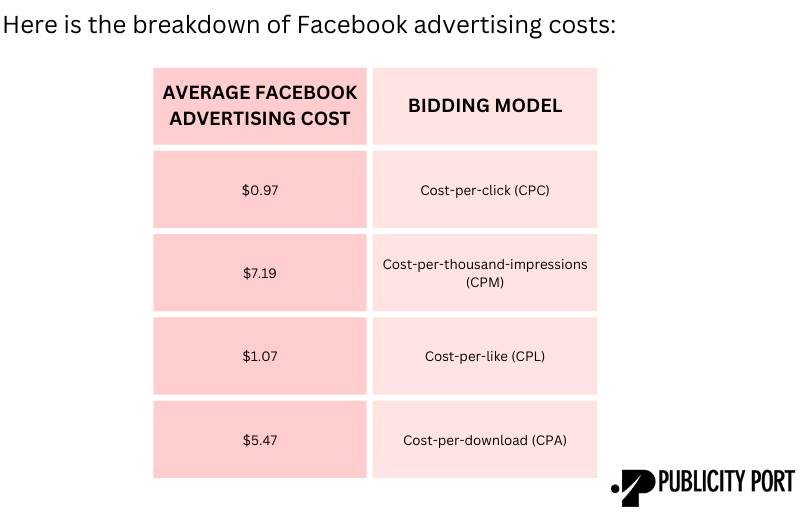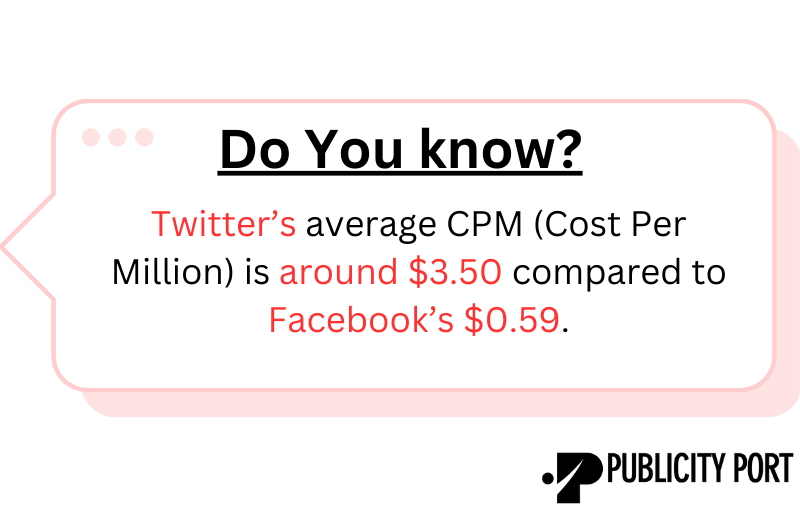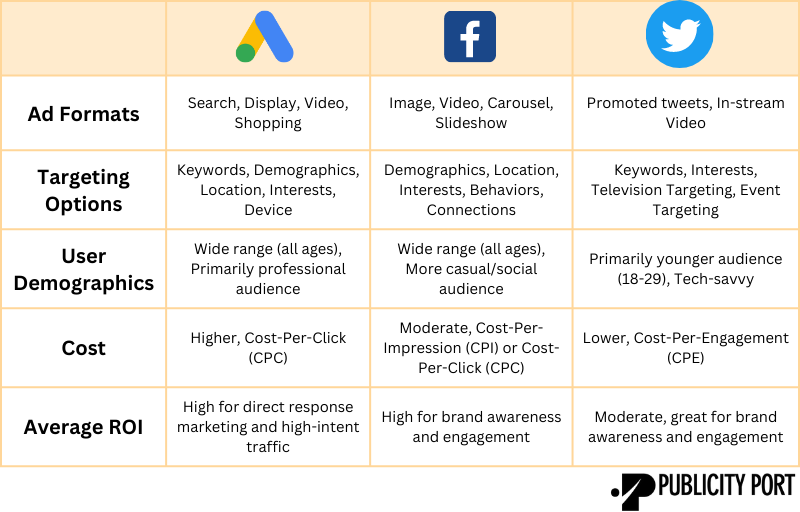“Marketing is no longer about the stuff that you make, but about the stories you tell.”
This insightful quote by bestselling author and blogger Seth Godin perfectly encapsulates today’s shift in the marketing world.
Now more than ever, storytelling through strategic digital marketing plays a vital role in connecting businesses with their target audiences.
In this context, White Label Pay-Per-Click (PPC) Management has become an indispensable tool for businesses to tell their stories more effectively. A critical part of this storytelling process involves selecting the right advertising platform.
And the success of your PPC campaigns significantly depends on whether you opt for Google Ads, Facebook Ads, or Twitter Ads.
In this article, we will explore the benefits and drawbacks of these three key platforms, providing insights to help you align with your client’s unique needs.
So, let’s delve!
Understanding White Label PPC Management
Stepping into the world of White Label PPC Management, it’s essential to first grasp its essence.
White Label PPC Management is a business model that allows digital marketing agencies to provide PPC advertising services to their clients without building in-house expertise. This is possible by partnering with a third-party provider who carries out the behind-the-scenes tasks while not interacting directly with the client.
White Label PPC can be a game-changer for digital marketing agencies, offering a chance to expand their services and cater to diverse client needs while saving on resources that would otherwise be spent on developing and maintaining an in-house PPC team.
Google Ads
When it comes to online advertising platforms, Google Ads reign supreme. It’s a comprehensive solution that caters to businesses of all sizes and across various industries.
- Advantages of Google Ads
Speaking about the advantages of using Google Ads, here are some major ones.
1. Extensive Reach
One of the distinct advantages of Google Ads lies in its extensive reach. With over 8.5 billion searches processed daily(source), businesses have an unparalleled opportunity to connect with potential customers actively seeking their services or products.
2. Detailed Analytics and Targeting
Google Ads offers a wealth of detailed analytics and targeting options. Advertisers can cater campaigns to specific demographics, locations, or even user interests and search behaviors. This degree of specificity significantly enhances ad relevancy, improving click-through rates and conversions.
3. Variety of Ad Formats
Ad formats allow for tailored marketing strategies, including Search, Display, Video, and Shopping ads. This makes Google Ads a versatile platform for diverse advertising needs.
- Potential Drawbacks of Google Ads
Though they are versatile, they do have some potential drawbacks. Google Ads is quite complex for beginners to navigate, and costs can escalate quickly if not managed effectively.
- Ideal Client Profiles of Google Ads
Google Ads can be a robust solution within your white label PPC offerings. It is particularly well-suited for clients,
- With a clear understanding of their target audience,
- Those seeking to tap into a broad audience base, and especially
- Those aiming to capitalize on the power of search-based queries.
Facebook Ads
As one of the most popular social media platforms globally, Facebook commands a significant online presence, making it a powerful tool in any digital marketer’s arsenal.
- Advantages of Facebook Ads
Here are some significant advantages.
1. Large Active User Base
With over 2.98 billion active users in 2023 (source), your clients’ advertisements have the potential to reach a vast array of consumers across different demographics and geographical locations. This extensive reach is one of the platform’s most appealing benefits.
2. Advanced Demographic and Interest-Based Targeting
Facebook Ads provides advanced demographic and interest-based targeting features. These tools allow advertisers to tailor their marketing efforts towards specific audience segments based on various factors such as age, gender, location, and personal interests.
By leveraging these features, you can craft more personalized and relevant ad campaigns, enhancing user engagement and increasing conversion rates.
3. Ability to Create Highly Engaging Ads
Facebook Ads also allows the creation of highly engaging ads using diverse ad formats. Whether it’s a compelling video, an eye-catching image, or an interactive carousel, the platform offers numerous ways to tell your stories and creatively capture the audience’s attention.

(source)
- Potential Drawbacks of Facebook Ads
It’s crucial to bear in mind that the platform’s ever-evolving algorithm and the increasing competition for ad space pose difficulties in achieving optimal visibility.
- Ideal Client Profiles of Facebook Ads
Given its diverse user base and highly targeted ad options, Facebook Ads would be best suited for businesses aiming to increase brand awareness, foster community engagement, or tap into a specific demographic.
Twitter Ads
Twitter is a social media platform that thrives on real-time conversations and trending topics. It is a stage for brands and individuals to engage with each other on current events, share thoughts, and generate buzz. Twitter Ads offer a unique opportunity to leverage this immediate engagement.

(source)
- Advantages of Twitter Ads
- Real-time engagement: When a topic relevant to your client’s business starts trending, a well-placed Twitter Ad help them join the conversation and get their message across to a potentially massive audience.
- Unique audience demographics: With a user base skewed towards a younger and more tech-savvy crowd, Twitter presents itself as an excellent platform for clients targeting this demographic.
- Keyword targeting: This feature allows your clients’ ads to appear in feeds of users who have used specific keywords in their tweets, providing a highly focused approach to reaching potential customers.
- Potential Drawbacks of Twitter Ads
Despite its advantages, Twitter Ads do have some potential drawbacks. Its fast-paced nature means that tweets can quickly get buried in the feed, potentially reducing ad visibility. Additionally, Twitter’s user base is smaller compared to Google and Facebook, which might limit its overall reach.
- Ideal client profiles of Twitter Ads
Twitter Ads can be ideal for clients who want to engage with a tech-savvy, modern audience and value real-time interactions and dialogue with their customers. With the right strategy, Twitter Ads can serve as a potent tool in your client’s digital marketing arsenal.
Now, having seen all the advantages, potential drawbacks, and its best suit client profiles, let’s see the factors to consider in deciding between these three.
Choosing The Right Advertising Platform For Your Clients

Navigating the landscape of online advertising platforms for white label PPC management services can be a complex endeavor. However, by focusing on certain critical factors, B2B digital marketing agencies can make decisions that best align with their client’s needs:
- Client’s Target Audience: Identify the target audience and select the platform that best aligns with it—for instance, Google Ads for a professional demographic and Facebook Ads for a broader reach.
- Industry-Specific Trends: Stay updated with client industry trends to understand which platform might have higher engagement or presence in that specific sector.
- Client’s Marketing Objectives: Ensure the platform’s strengths align with the client’s goals. Consider Google Ads for lead generation and sales and Facebook or Twitter Ads for brand awareness and engagement.
- Budget: Understand the client’s budget and compare it with the cost structure of each platform. Weigh the cost against potential returns, with Google Ads typically being more costly but driving high-quality leads, while Facebook and Twitter may be less expensive.
- Platform’s Analytics and Reporting: Assess each platform’s analytical tools and reporting capabilities. Robust, actionable insights are a vital component for successful white label PPC management, allowing for ongoing optimization of campaigns.
By considering these factors in white label PPC management, B2B digital marketing agencies can make decisions on the right platforms for their clients, leading to optimized results and enhanced client satisfaction.
Choosing the best PPC platform means finding what aligns with your clients’ needs, whether Google Ads, Facebook Ads, or Twitter Ads. This client-centric approach boosts campaign success and client satisfaction, solidifying your agency’s value.
Ready to bring white label PPC services into your portfolio? Contact us now for expert guidance or kick-start your journey with our customized solutions.